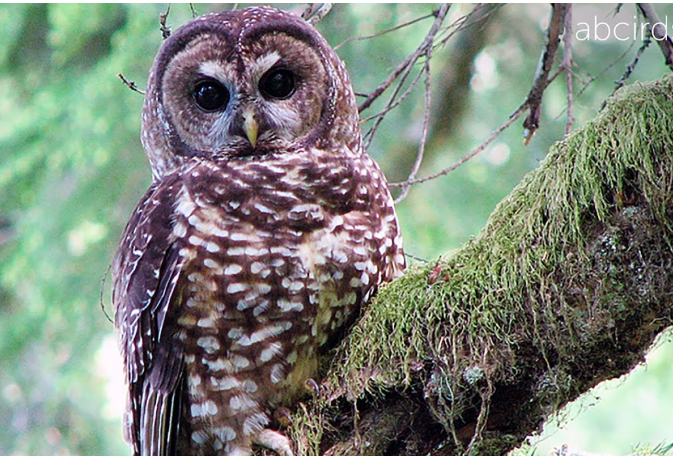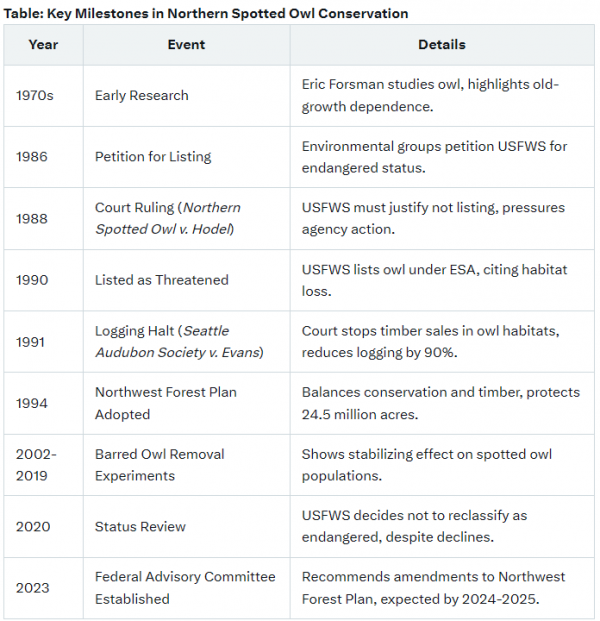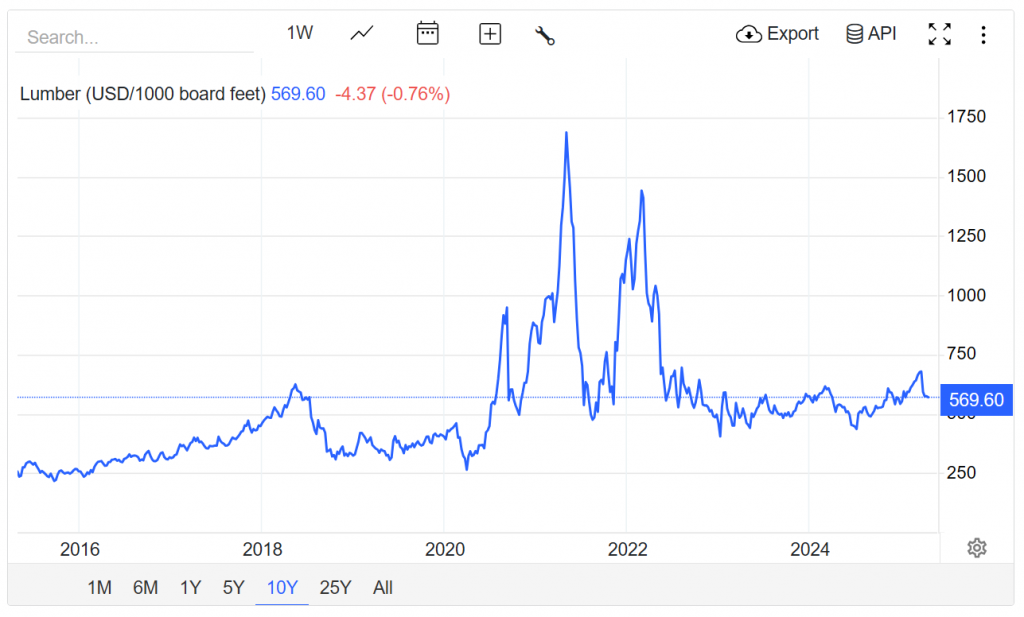Spotted Owl Soup — A Jobs Creator And Tariff Buster
If you are of a certain age, you will recall the saga of the Pacific Northwest spotted owl — strix occidentalis caurina. This was the classic logging/timber/lumber v environmentalists controversy that castrated the lumber industry in the Pacific Northwest.
It is an apochryphal environmental story and one that demonstrates the impact of regulation on industry and the unanticipated impact on foreign trade. It is also indicative of the “winner-take-all” nature of politics.
What happened, Big Red Car?
The environmentalists took the US Fish and Wildlife Service to task, petitioned for protection for the spotted owl, and ended up with the spotted owl being designated as “threatened.” It was not listed as “endangered” which is a more serious and troublesome classification.
The main beef of the environmentalists was that logging on Federal lands reduced habitat for spotted owls. This was a 24,000,000 acre area of Federal timberland. It was particularly focused on what was called “old growth timber” — trees that were often more than 100 years old.
The environmentalists did not believe the spotted owl was smart enough to move its nest to somewhere that was not being logged within that 24,000,000 acres of Federal land.
Here is the history of the spotted owl litigation and regulation.
The big event was the 1991 logging halt that took approximately 24,000,000 acres of Federally owned timber land out of the inventory of loggable land. This was a death knell for the logging industry.
The logging companies were content to sacrifice half of the 24,000,000 acres, but the environmentalists had the upper hand in the Congress, the White House, and, thus, the courts. The environmentalists would not consider banning logging in only old growth timber areas or some subset of that land. There was substantial Federal land that was NOT old growth timber. There was no compromise.
So, what happened then, Big Red Car?
As you can imagine there were gigantic impacts:
1. Broad swaths of sawmills closed down — more than 50 alone in 1990. Smaller, more tenuously funded, sawmills just disappeared.
Believe it or not, it is virtually impossible to get accurate numbers on sawmills impacted as the timber was transported great distances, but, in general the impact was a 75% reduction in the impacted area.
2. Existing larger scale sawmills re-tooled and became dramatically more efficient to try to be profitable by eliminating labor. These larger sawmills had access to privately owned forests.
3. Jobs disappeared with the cessation of logging on Federal lands in the forest, at the sawmills, and in trucking. It was a devastating blow.
4. Because there was no more logging, no logging roads were construcrted resulting in an inability to control forest fires and thus huge losses of spotted owl habitat. This was exactly the outcome they were trying to avoid — reduction of spotted owl habitat.
5. With the reduction of US produced lumber, Canada filled the gap and American companies bought Canadian lumber at an increasing rate.
So, what happened with Canada, Big Red Car?
Good question, dear reader.
Initially, Canada was a huge beneficiary of the spotted owl shutdown of Pacific Northwest logging rising to almost 20 BBF/year in imported Canadian lumber. BBF = billion board feet. A board foot is 1″ x 12″ x 12″ of wood.
At the same time, the production of US Southern pine — generally a good wood, but not as good as the old growth wood from the Pacific Northwest and Douglas fir from Canada — began to increase dramatically.
At the same time sawmill utilization rates in the US began to decline because it was difficult to get a good supply of logs to cut and because imported Canadian lumber was very cost effective.
Why was Canadian lumber cost effective, Big Red Car?
The country of Canada owns all of the loggable land — the forests — in Canada. They allow Canadian logging companies to cut their trees and then set the price after they are all cut. [Canadian sawmill owners are a potent political fundraising slice in Canada. Surprised?]
In this fashion, the Canadian government subsidizes the logging and sawmill companies to the ire of American companies.
This tension resulted in the Trump 1.0 admin imposing tariffs that had the desired effect of driving more lumber sales and jobs to American mills. In this instance tariffs worked exactly as intended.
Trump 1.0’s successful actions were followed by the impact of both the Pandemic and Joe Biden. The price chart of lumber in the US is all over the place during the Biden regime and fairly sound during Trump 1.0/2.0.
OK, so where are we going, Big Red Car?
Here is where we are going:
1. The US Fish and Wildlife Service has the spotted owl under review for its protected status — currently “threatened.”
2. A new apex predator — the barred owl (strix varia) — is alleged to be thinning the herd of the spotted owl. It is not clear why this is a recent development. This feels like Mother Nature getting into the fray.
3. The environmentalists are ready to go to war to preserve the status of the spotted owl and, possibly, to have it classified as “endangered” rather than “threatened.”
The environmentalists are adding to their bag of tricks the normal climate change attachment and other concerns. They are also ignoring the presence of the barred owl which seems odd.
4. The Trump admin will undoubtedly focus on jobs and trade.
Bottom line it, Big Red Car, we’re eating a lot of Easter candy today
Fine, here it is:
1. This is a perfect example of how regulation negatively impacts industry. The Clinton administration embraced the original spotted owl Endangered Species Act listing.
2. The spotted owl cost jobs and dramatically shrunk a bedrock American industry and devastated a region of the country for whom logging and lumber was a big deal.
3. The unintended consequence of the importation of Canadian lumber in the face of growing demand has now become an equally important issue.
Three good things could happen if there was a simple compromise on the spotted owl habitat — say restrict only half of the 24,000,000 acres of Federal land and concentrate on lands other than old growth timber.
1. Good jobs would be created in the Pacific Northwest.
2. The price of lumber in the US would be favorably impacted.
3. The issue of importing Canadian lumber would be blunted.
This is a perfectly reasonable response to the overregulation caused by the Endangered Species Act.
But, hey, what the Hell do I really know anyway? I’m just a Big Red Car. Hope you had a Happy Easter!










